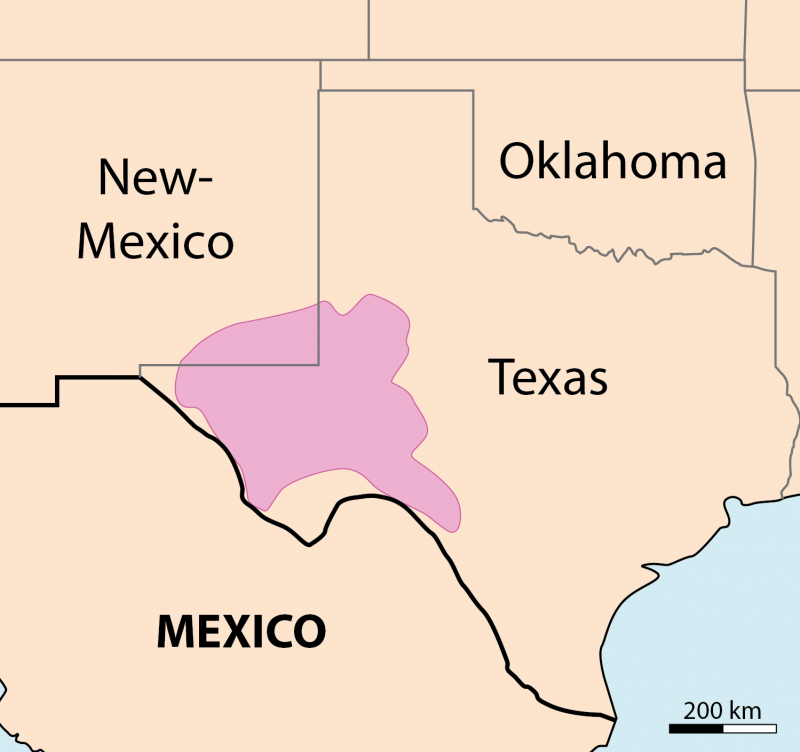The Permian Basin, located in western Texas and southeastern New Mexico, is the highest-producing oil field in the United States. In 2019, it averaged 4.2 million barrels of crude oil per day. This significant sedimentary basin is a key area for US oil production.
1917: Marathon Fold Theory
In 1917, J.A. Udden, a University of Texas geology professor, speculated that the Marathon Fold, associated with the Marathon Mountains, may extend northward, suggesting a potential oil trap.
1918: Elaboration of the Marathon Fold Theory
In 1918, geologists R.A. Liddle and J.W. Beede further elaborated on the Marathon Fold theory, solidifying the idea of a potential oil trap in the eastern Permian Basin.
1920: First documentation of oil reserves
In 1920, W.H. Abrams first documented oil reserves in Mitchell County, West Texas, marking an early milestone in the exploration of the Permian Basin.
1921: First commercial well opened
In 1921, the first commercial well was opened in the newly discovered Westbrook Oil Field in Mitchell County, at a depth of 2,498 feet (761 m).
1923: Discovery of the Big Lake Oil Field
In 1923, the Big Lake oil field was discovered, adding to the growing list of oil fields in the Permian Basin.
1924: Establishment of geological offices
By 1924, various companies, including the California Company (Standard Oil of California), Gulf Oil, Humble (Standard Oil of New Jersey), Roxana (Shell Oil Company), Dixie Oil (Standard Oil of Indiana), Midwest Exploration (Standard Oil of Indiana), and The Texas Company, established regional geological offices in the Permian Basin.
1925: Discovery of the World and McCamey Oil Fields
In 1925, both the World oil field and the McCamey oil field were discovered, continuing the rapid expansion of oil exploration in the Permian Basin.
1926: Discovery of the Hendrick and Yates Oil Fields
In 1926, the Hendrick oil field and the Yates Oil Field were discovered, marking a significant year for oil discoveries in the Permian Basin.
1928: Discovery at the No. I-B University Well
In 1928, the No. I-B University discovery well found oil at 8,520 feet within the Ordovician formations of Big Lake.
1933: Discovery of the Harper oil field
In 1933, the Harper oil field was discovered, contributing to the growing number of oil fields in the Permian Basin.
1934: Discovery of the Goldsmith and Means oil fields
In 1934, the Goldsmith oil field and the Means oil field were discovered, continuing the expansion of oil exploration.
1935: Discovery of the Foster and Keystone oil fields
In 1935, the Foster oil field and the Keystone oil field were discovered, further increasing oil exploration in the Permian Basin.
1936: Discovery of the Wasson oil field and Slaughter Field
In 1936, the Wasson oil field and the Slaughter Field were discovered, with the Wasson oil field discoveries extending into 1937.
1937: Discovery of the Wasson oil field
In 1937, the discovery of the Wasson oil field that begun the previous year continued.
1942: Discovery of the Embrar oil field
In 1942, the Embrar oil field was discovered, marking a significant discovery during World War II due to the urgent need for oil.
1944: Discovery of the TXL oil field
In 1944, the TXL oil field was discovered, highlighting the ongoing exploration and development during World War II.
1945: Discovery of the Dollarhide and Block 31 oil fields
In 1945, the Dollarhide oil field and the Block 31 oil field were discovered, contributing to the increased oil production during the later stages of World War II.
1948: First production well completed
In 1948, the first production well, Seabird Oil Company of Delaware No. 1-B J. C. Caldwell, was completed in the Horseshoe Atoll.
1966: Peak Production and Economic Impact
In 1966, the Permian Basin's production reached 600 million barrels of oil and 2.3 trillion cubic feet of gas, totaling $2 billion in value, marking a peak in its economic impact.
1993: Total Production Milestone
By 1993, the Permian Basin had produced a total of over 14.9 billion barrels of oil, driven by the installation of gas pipelines and oil refineries.
2018: Production levels
As of 2018, the Permian Basin has produced more than 33 billion barrels of oil, along with 118 trillion cubic feet of natural gas, accounting for 20% of US crude oil production and 7% of US dry natural gas production.
October 2019: Flaring and Venting of Natural Gas
In October 2019, it was reported that companies in the Permian Basin were flaring or venting natural gas due to a lack of pipeline infrastructure, leading to increased greenhouse gas emissions. It was found that 3.7% of the produced gas, equivalent to the consumption of 7 million Texas homes, was being lost due to leaks.
2019: Highest oil production
In 2019, the Permian Basin produced an average of 4.2 million barrels of crude oil per day, making it the highest-producing oil field in the US.
2020: Oil Production Rate
In early 2020, the Permian Basin was pumping over 4 million barrels of oil a day.
Mentioned in this timeline
California is a U S state on the Pacific Coast...
World War II - was a global conflict between the...
Texas the second-largest US state by area and population is...

War is defined as an armed conflict involving the organized...
Indiana nicknamed the Hoosier State is a Midwestern state in...

Satellites often spacecraft are objects intentionally placed into orbit around...
Trending

1 month ago Trump Threatens US Military Action in Nigeria; Nigeria Rejects the Intervention
2 months ago Carter Hart Signs with Vegas Golden Knights After Acquittal, Gets Second NHL Chance
14 days ago Mario and Courtney Lopez celebrate 13 years of marriage with loving tributes.

1 month ago Biden Criticizes Trump's Democracy Stance, Addresses Shutdown, and Attends Ben Nelson Gala.
9 months ago Olivier Rioux's Height Stuns Fans in Viral Photo with Tracy Wolfson

9 months ago Kevin Kiley faces constituent pressure, hosts virtual town hall after criticism.
Popular

Candace Owens is an American conservative political commentator and author...

Ilhan Omar is an American politician currently serving as the...

XXXTentacion born Jahseh Dwayne Ricardo Onfroy was a controversial yet...

Tucker Carlson is an American conservative political commentator known for...

Charles James Charlie Kirk was a prominent American right-wing political...

Bill Gates an American businessman and philanthropist revolutionized personal computing...
